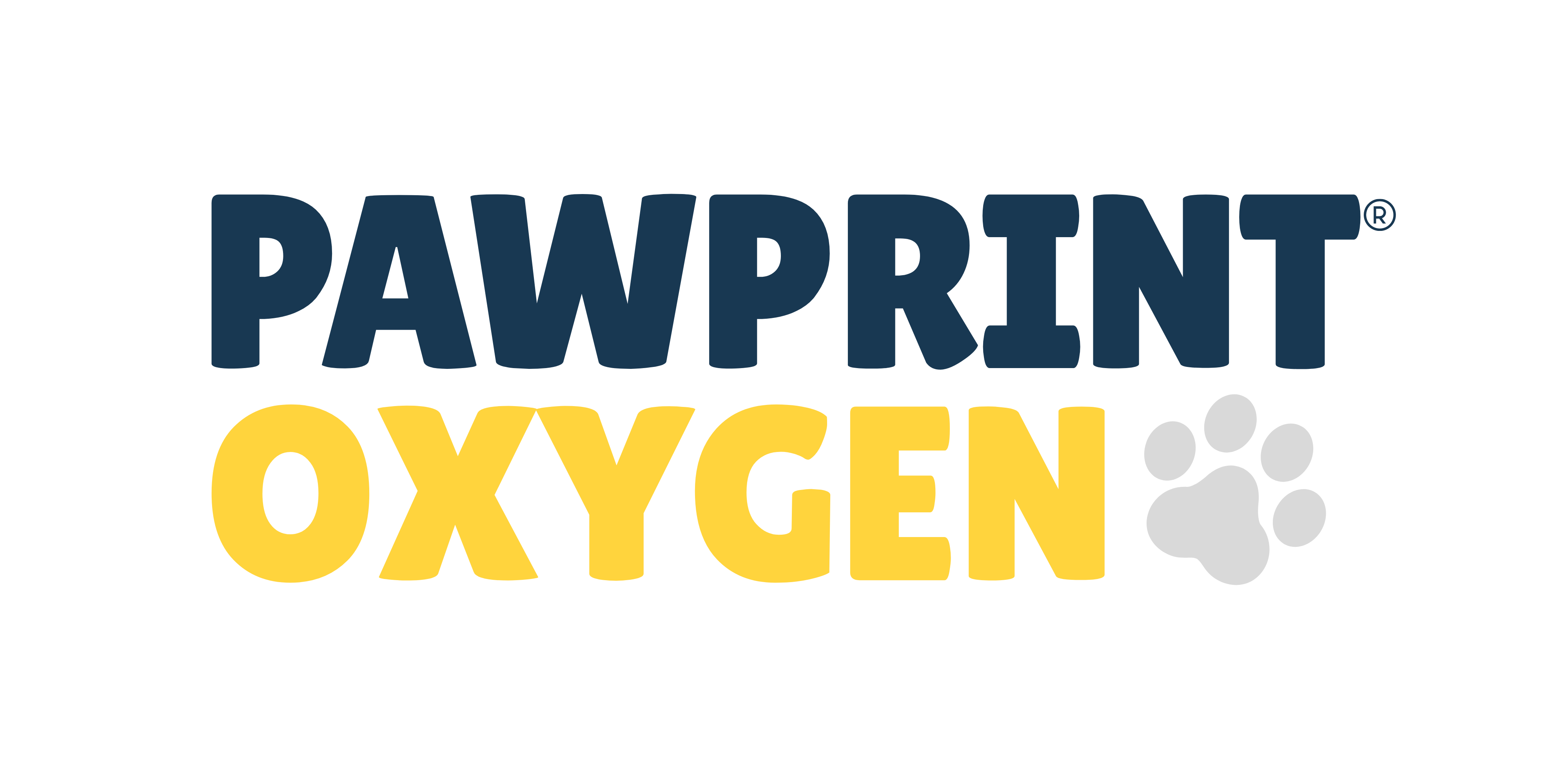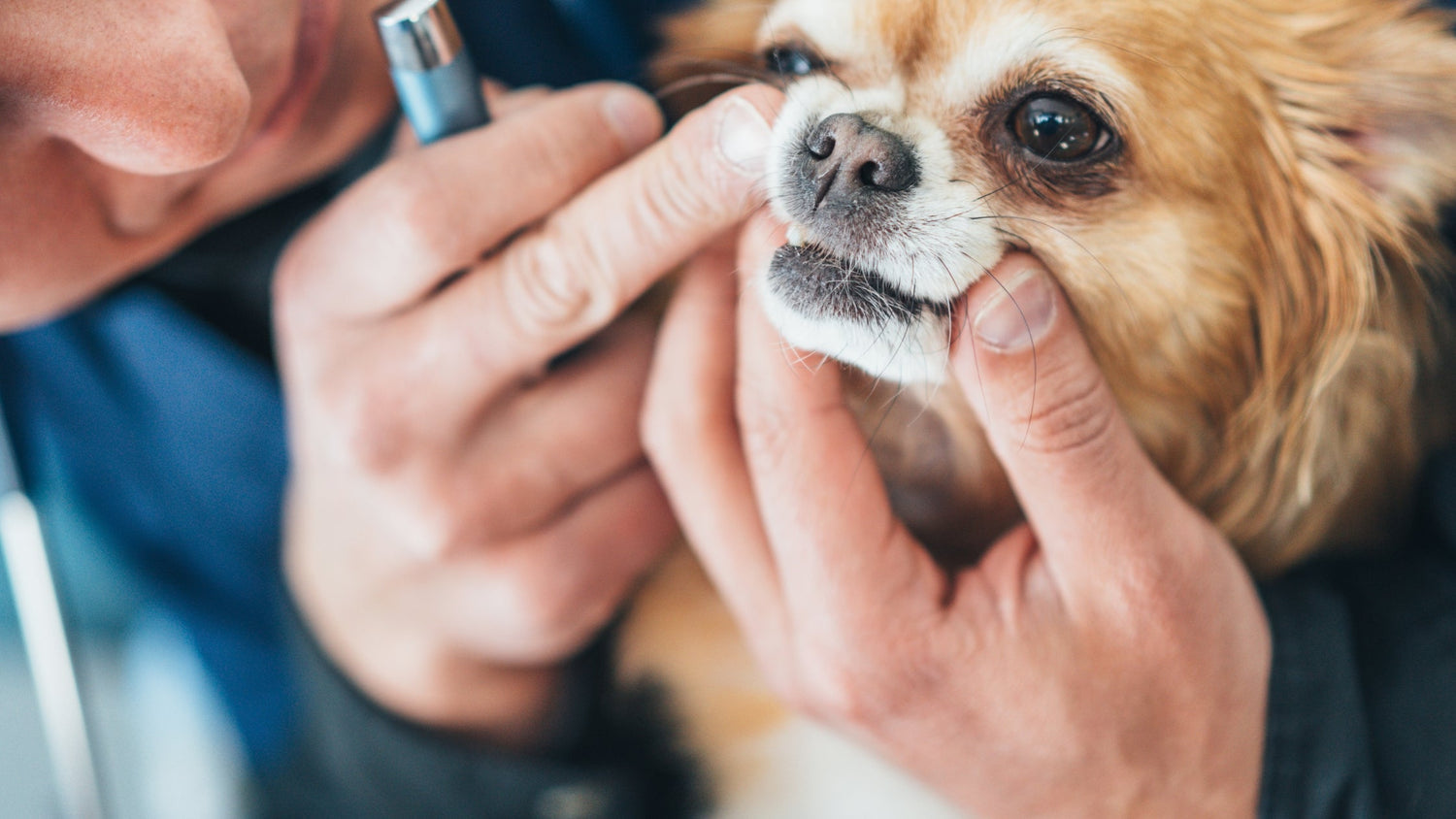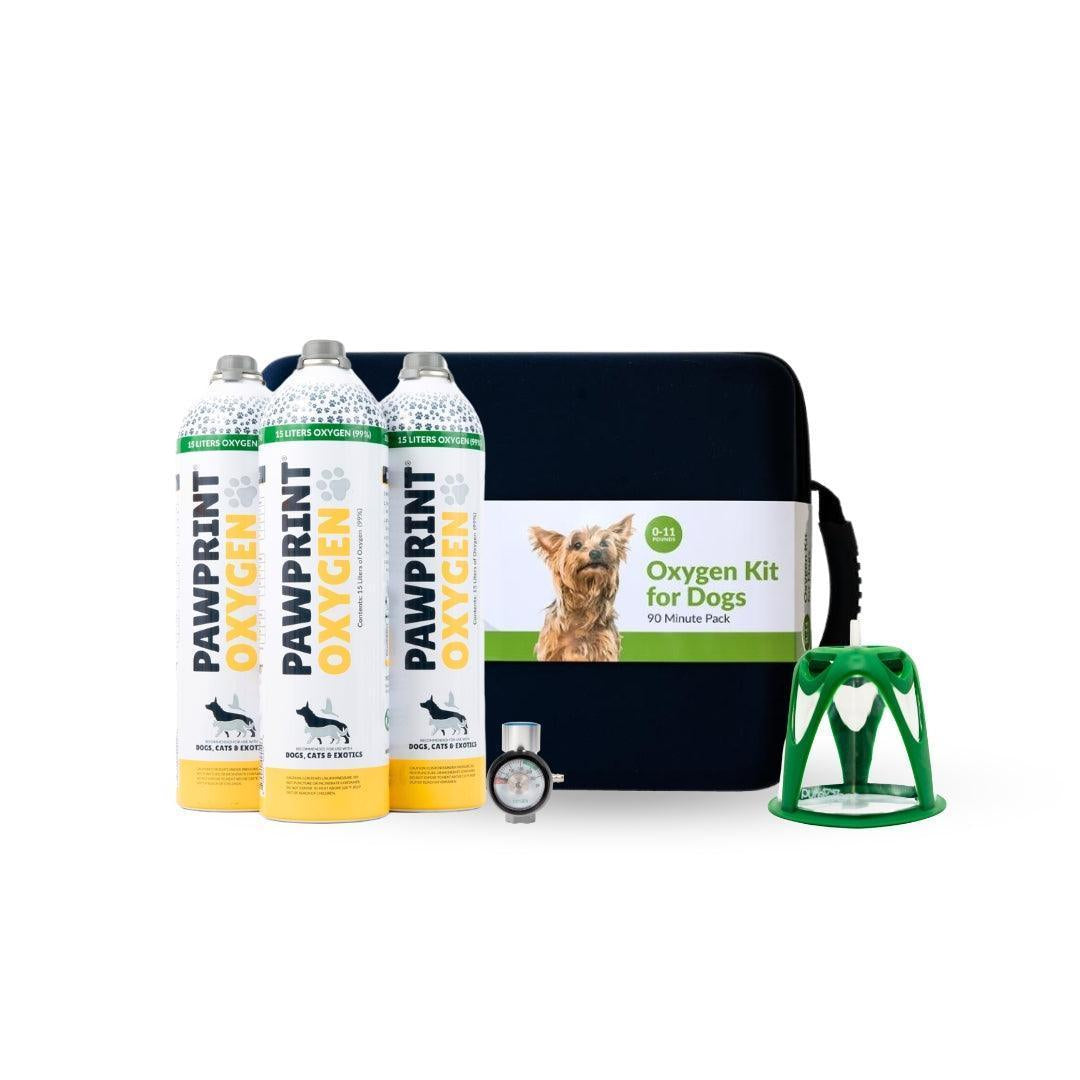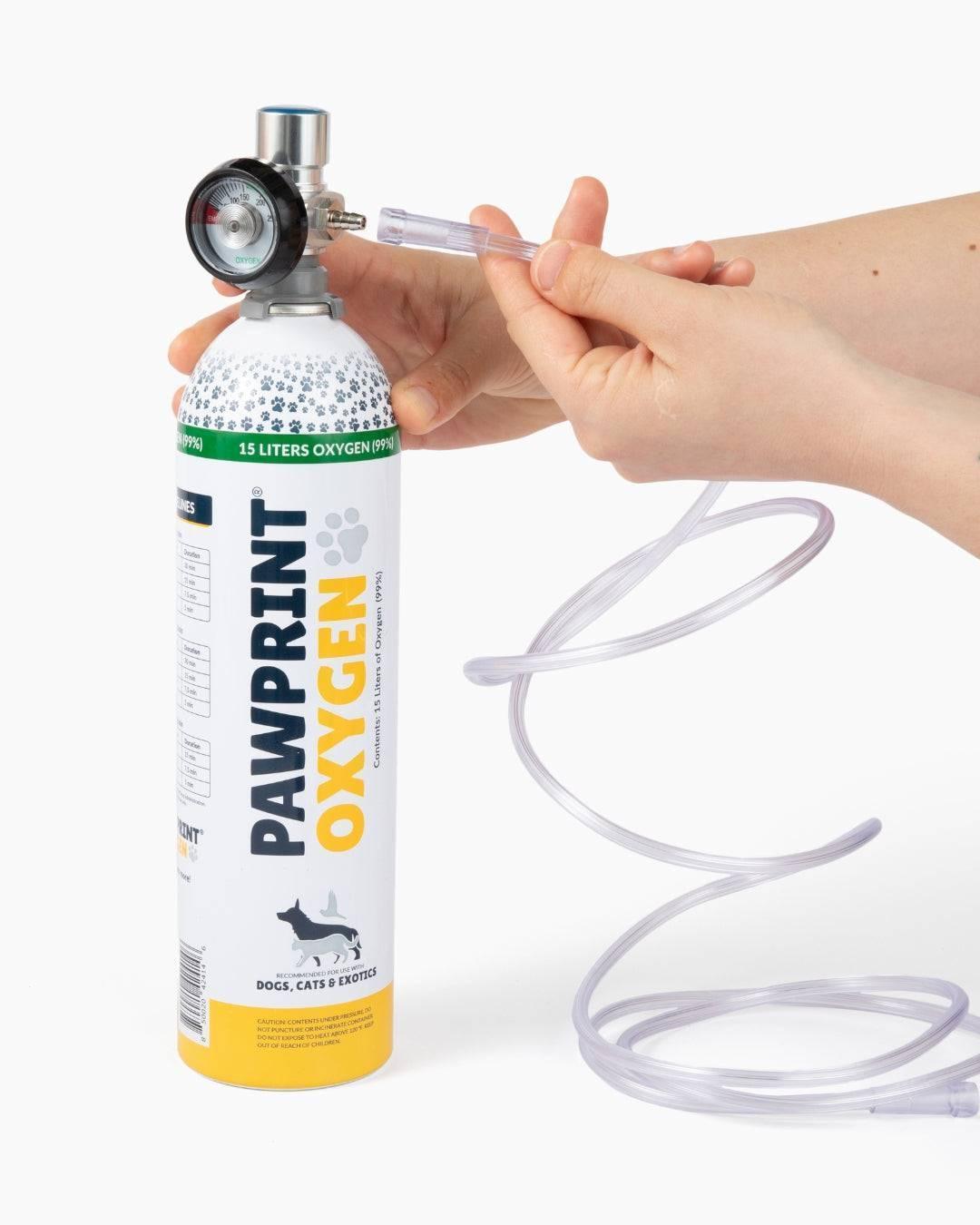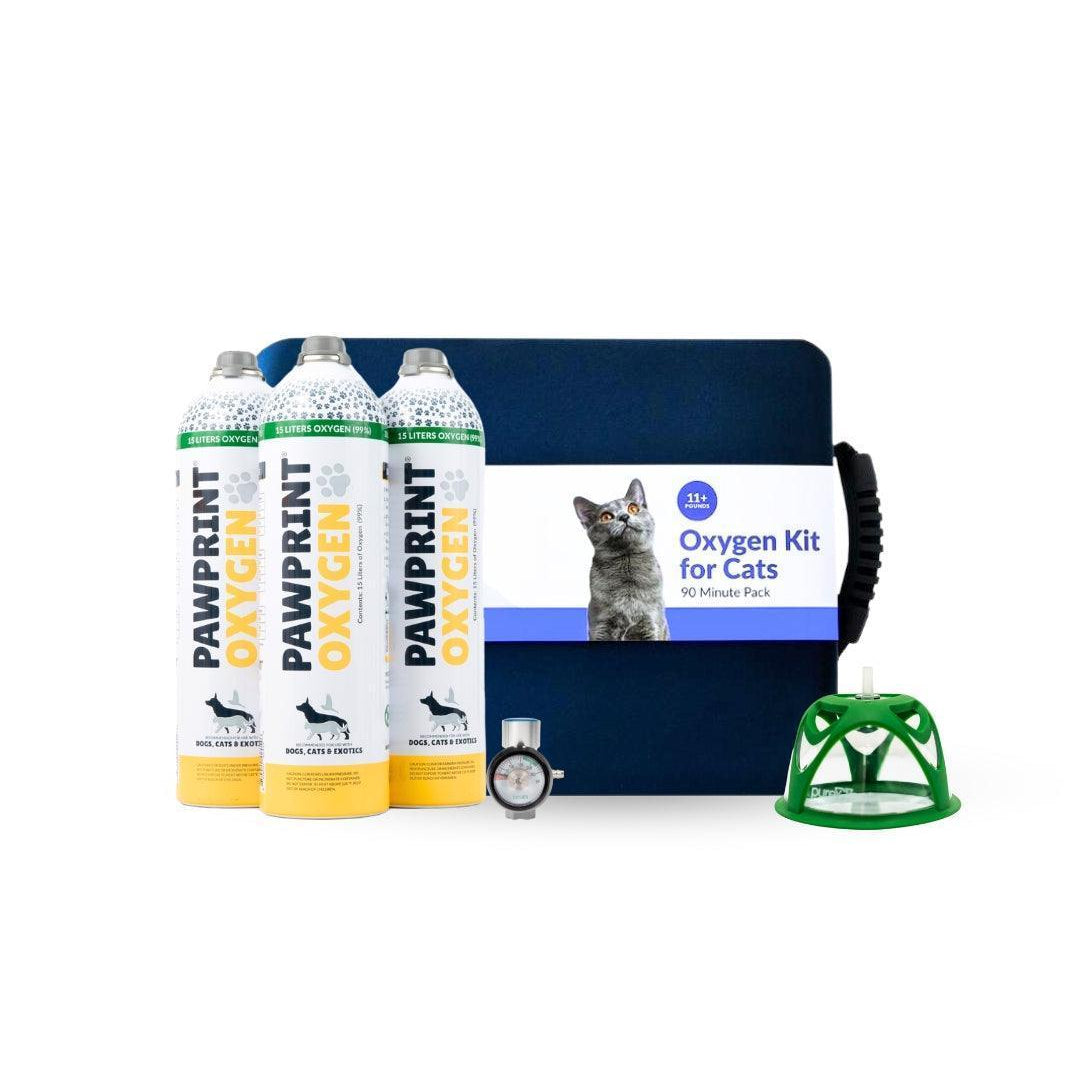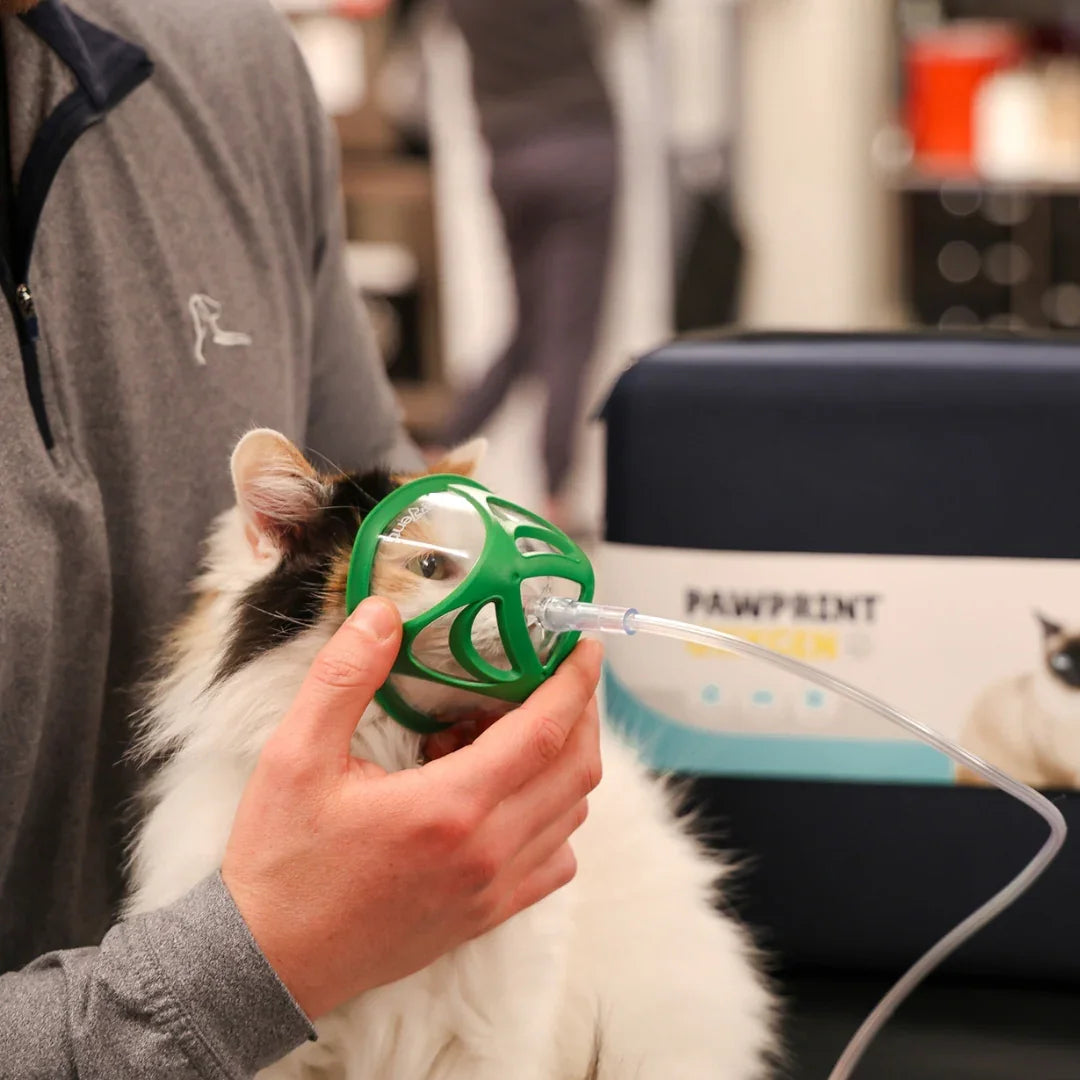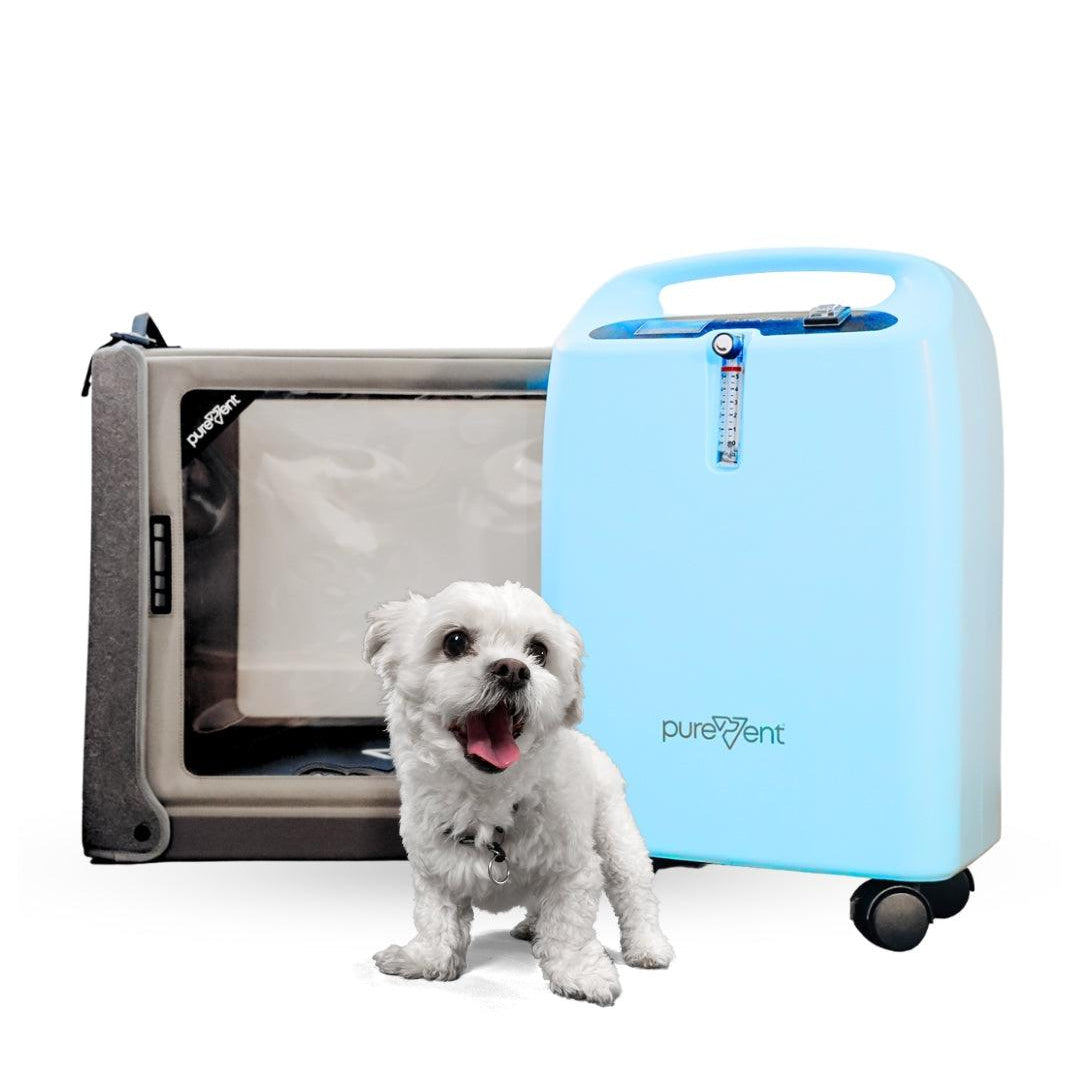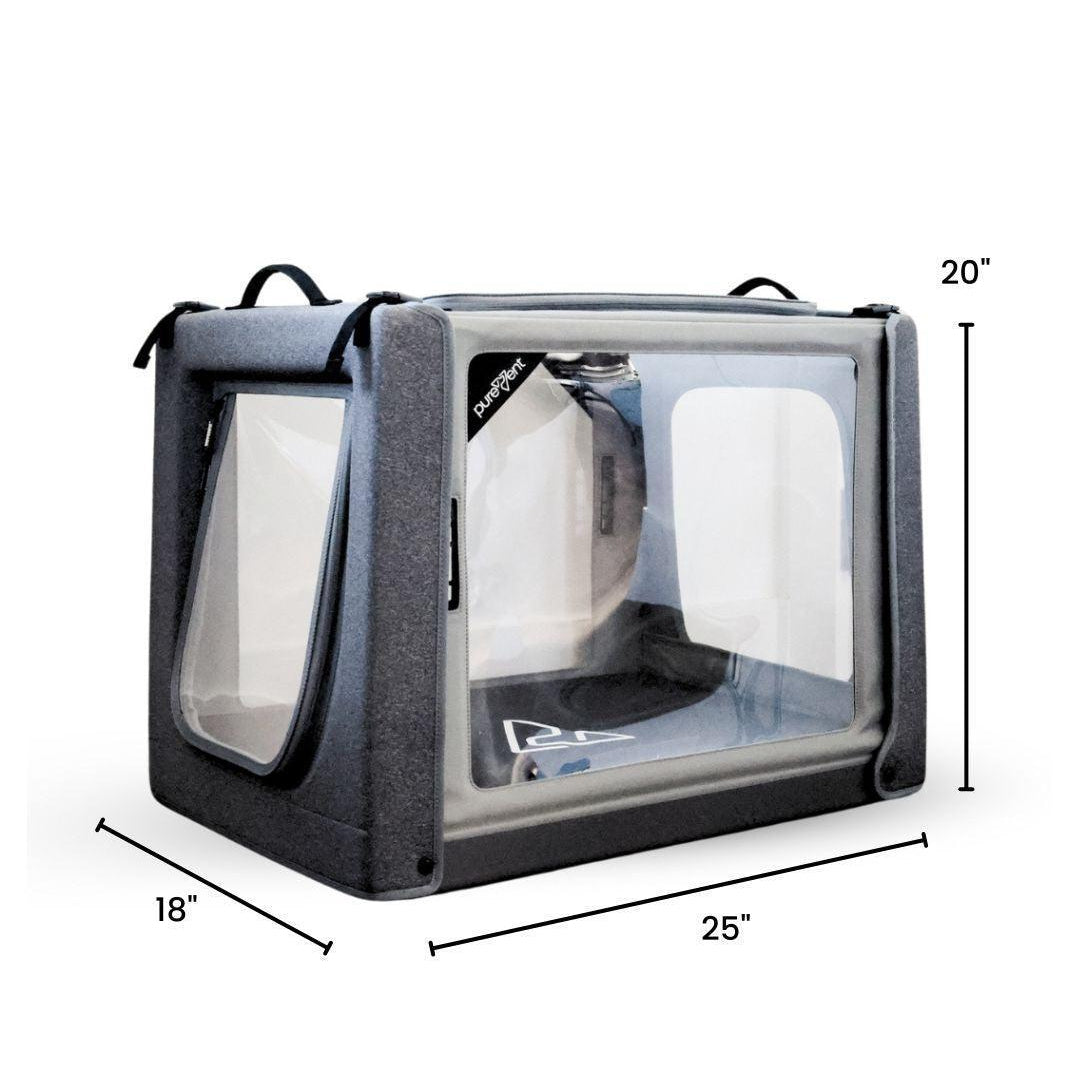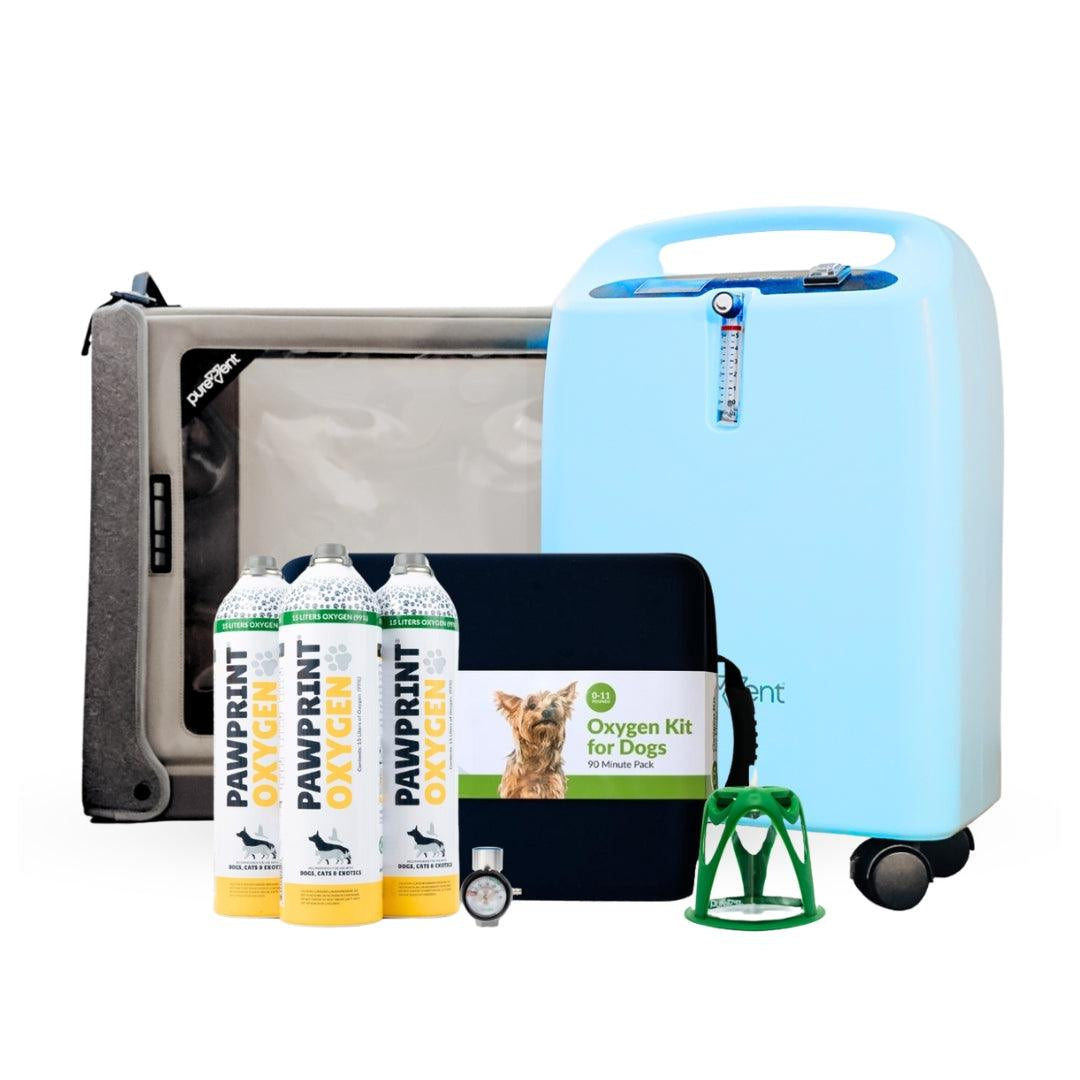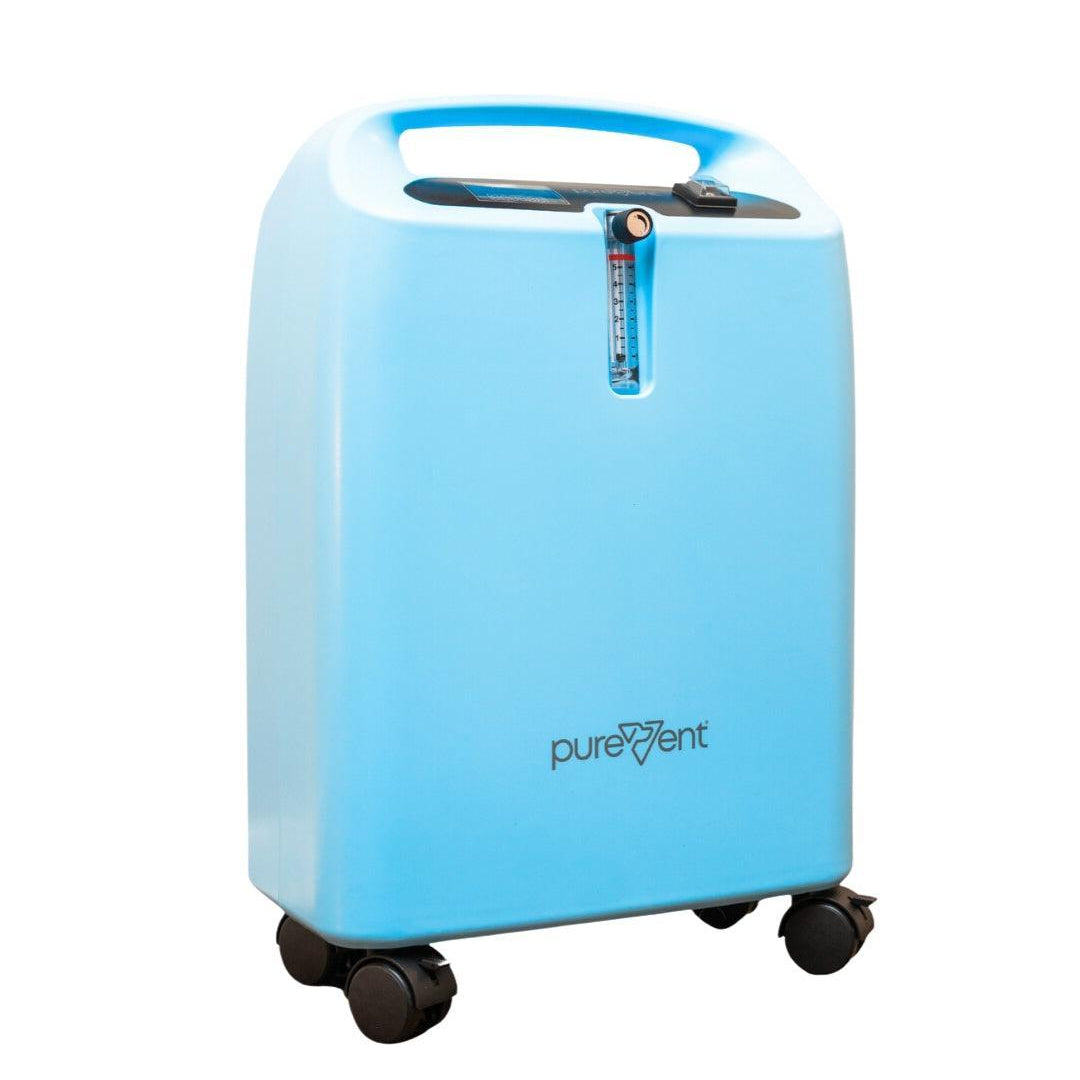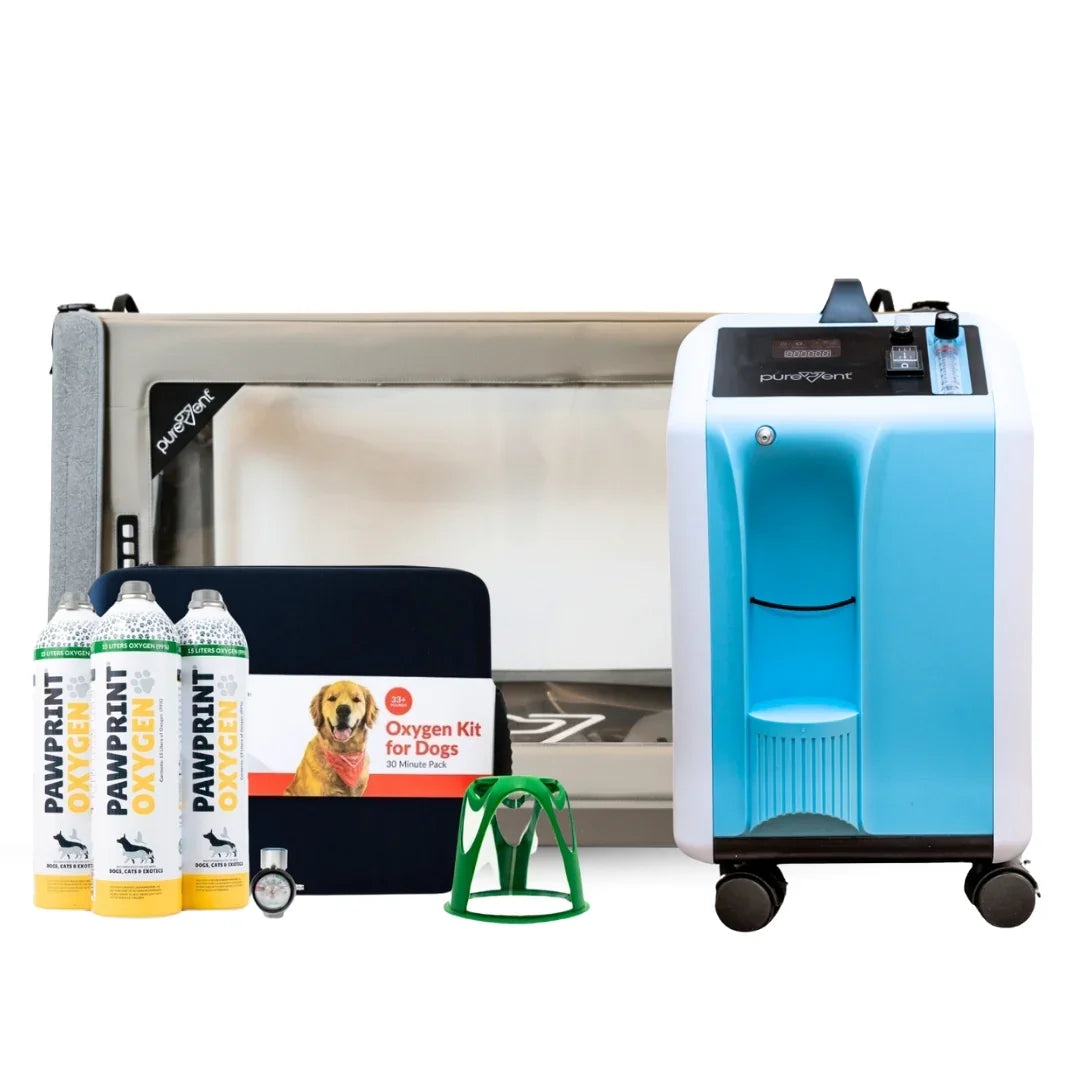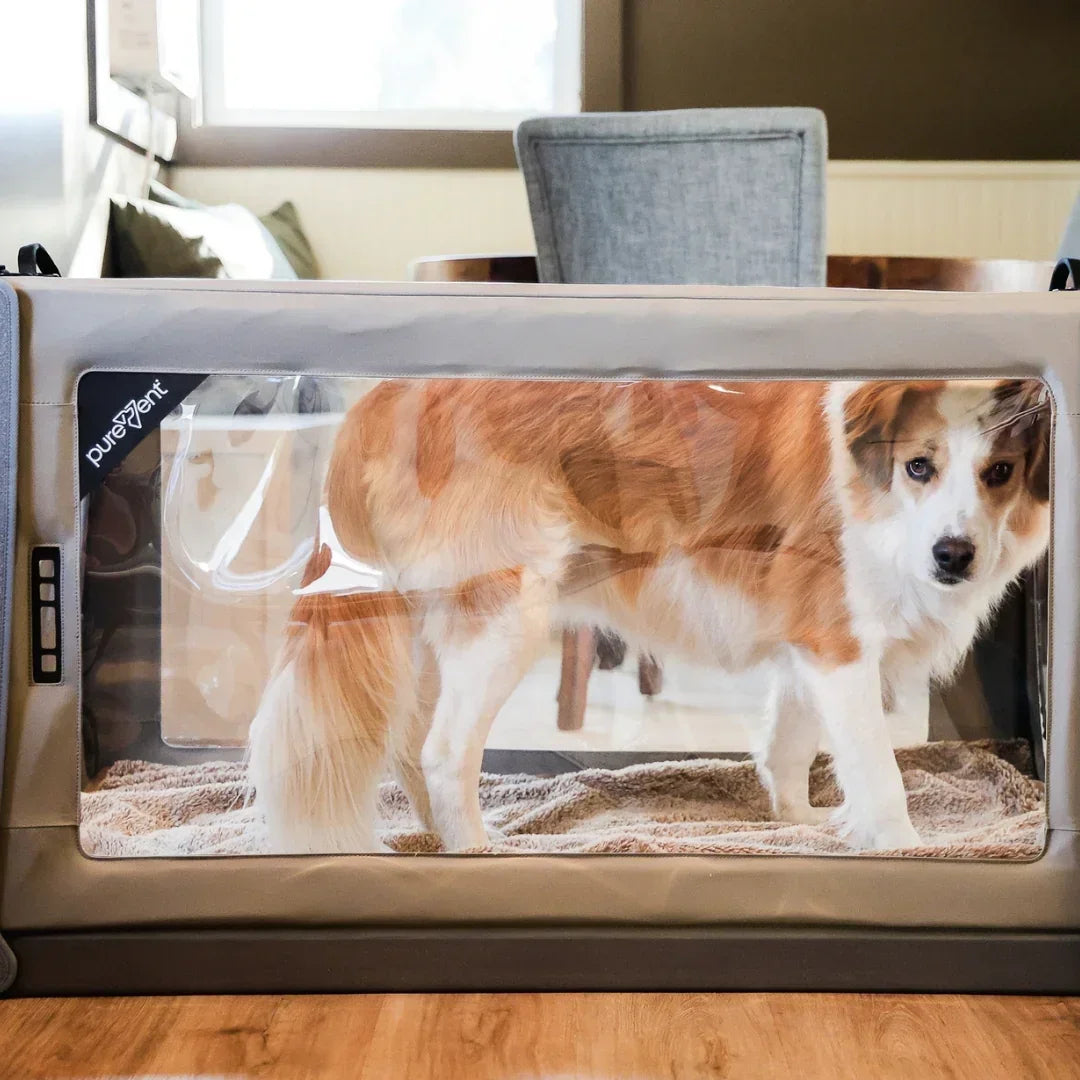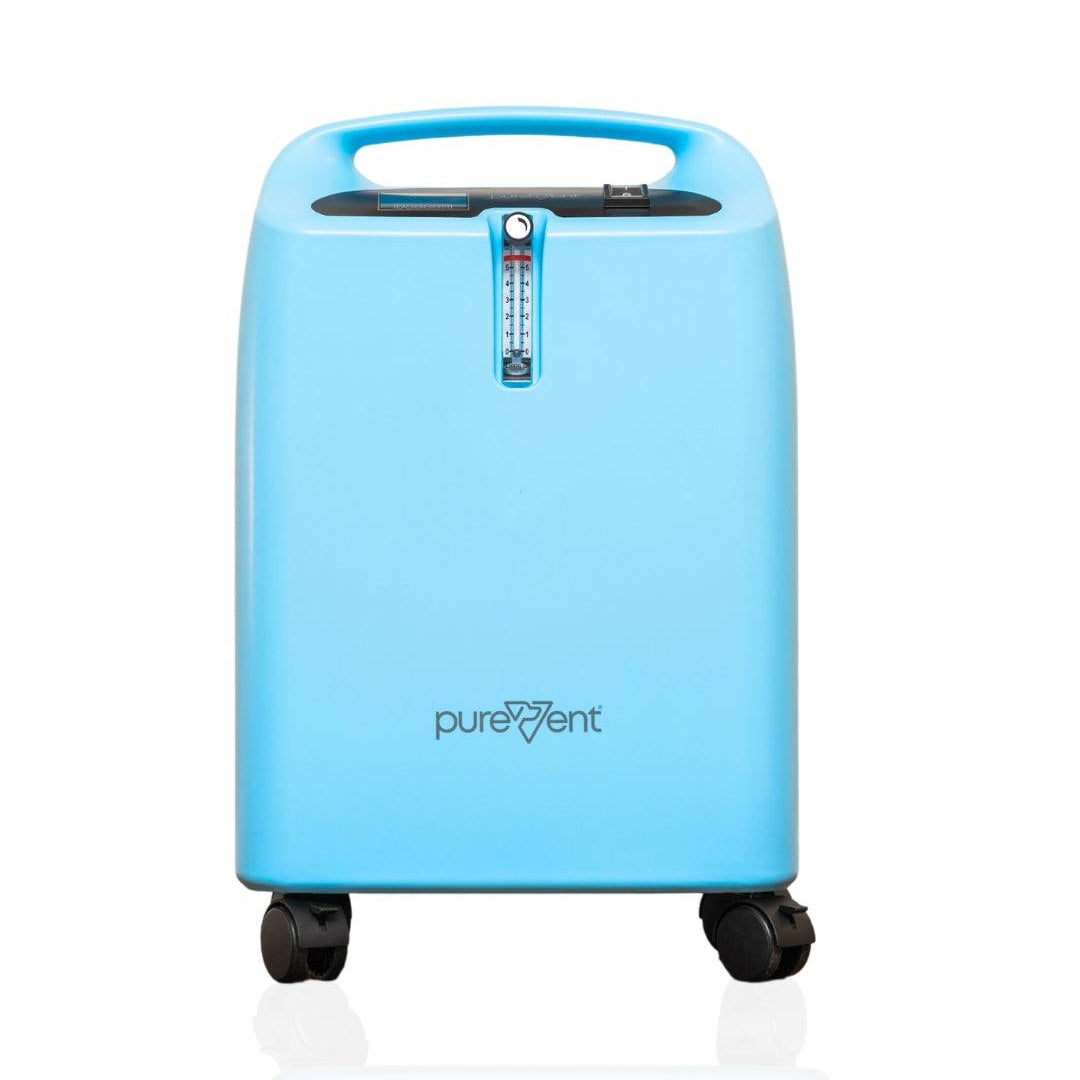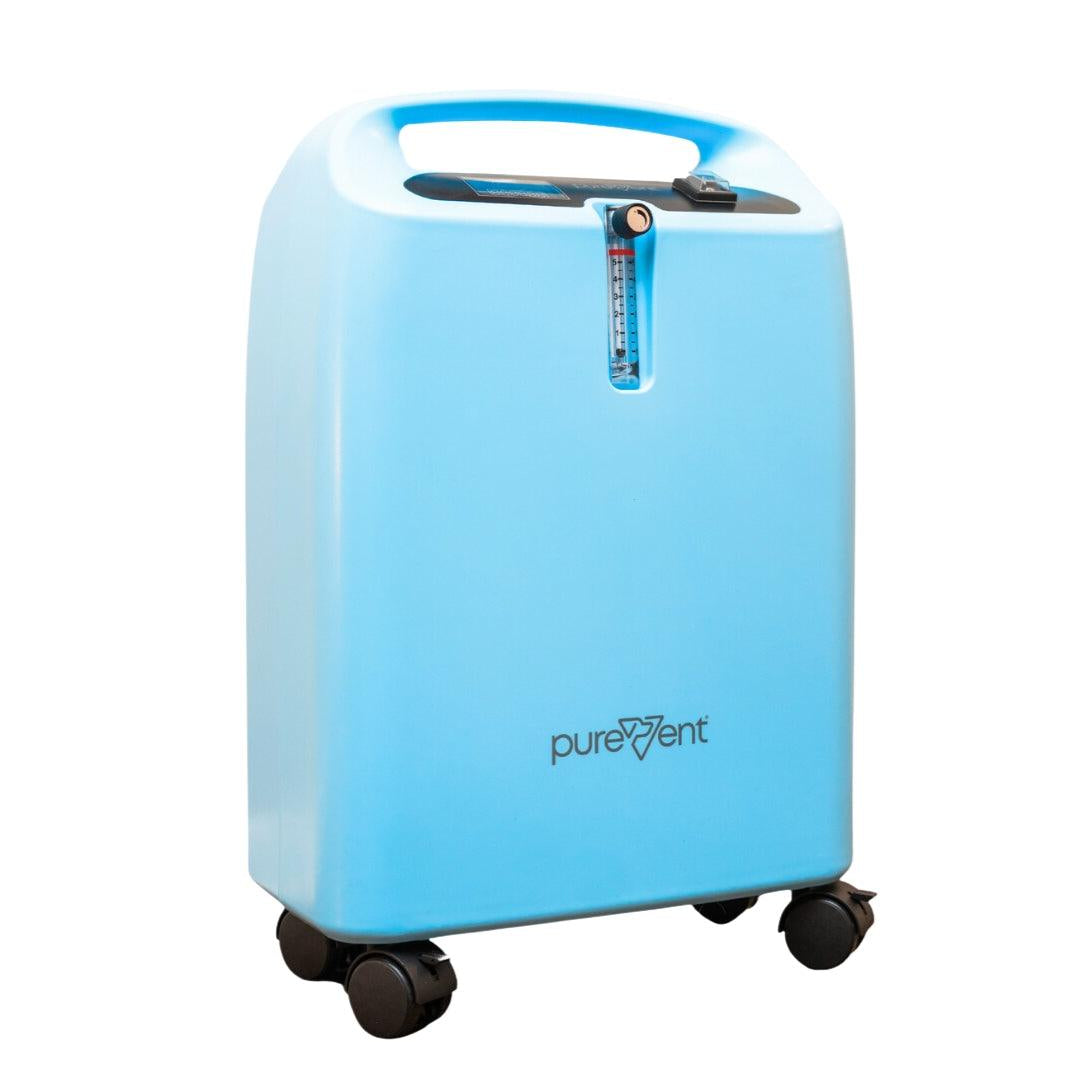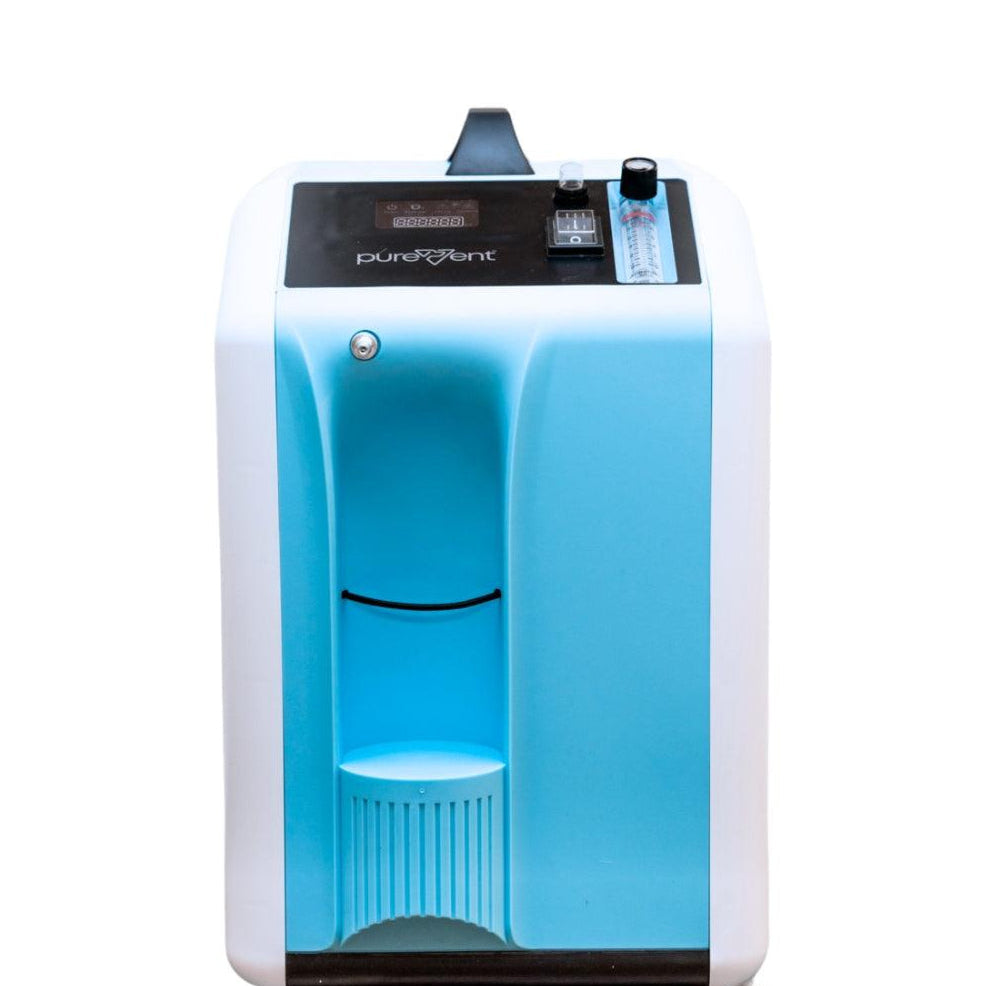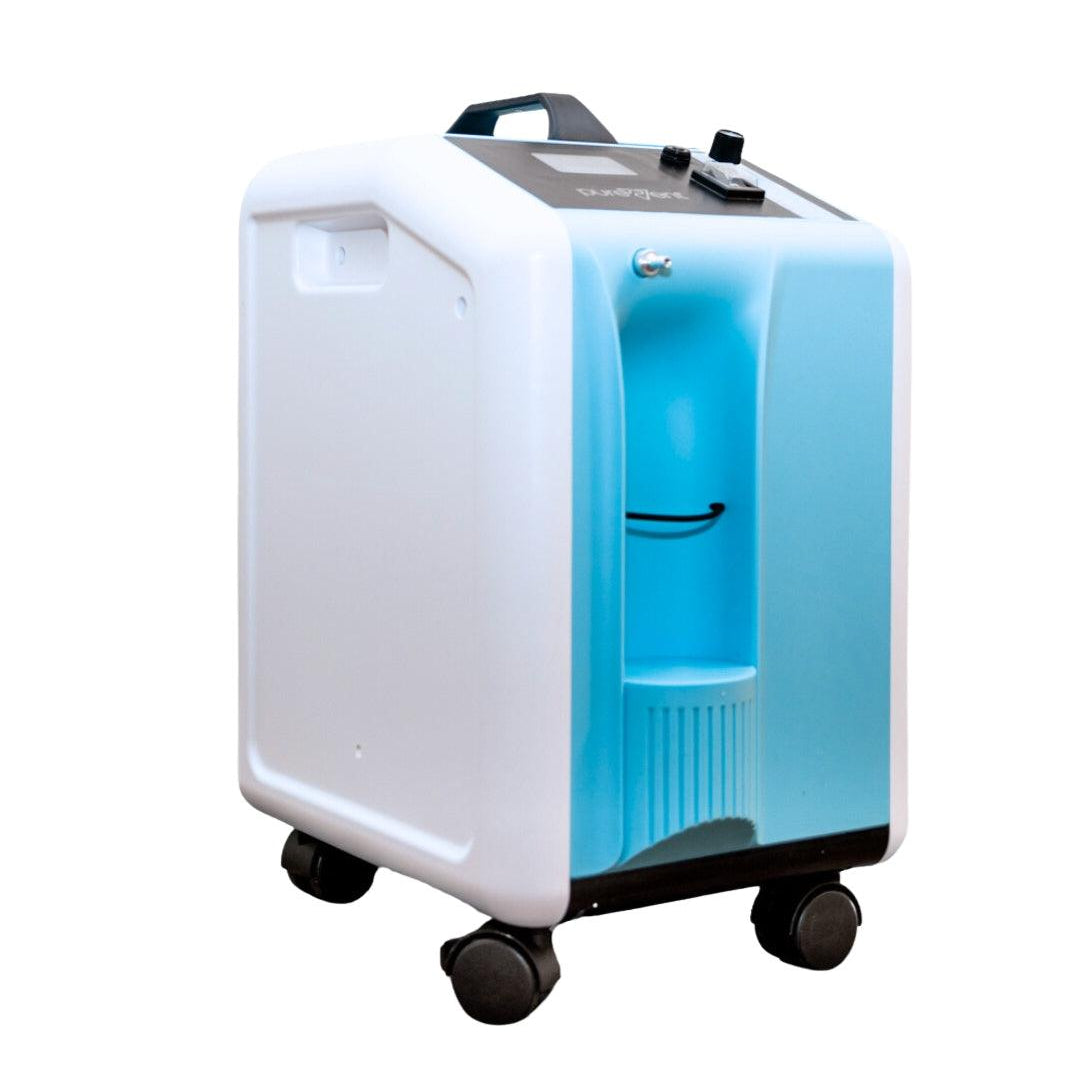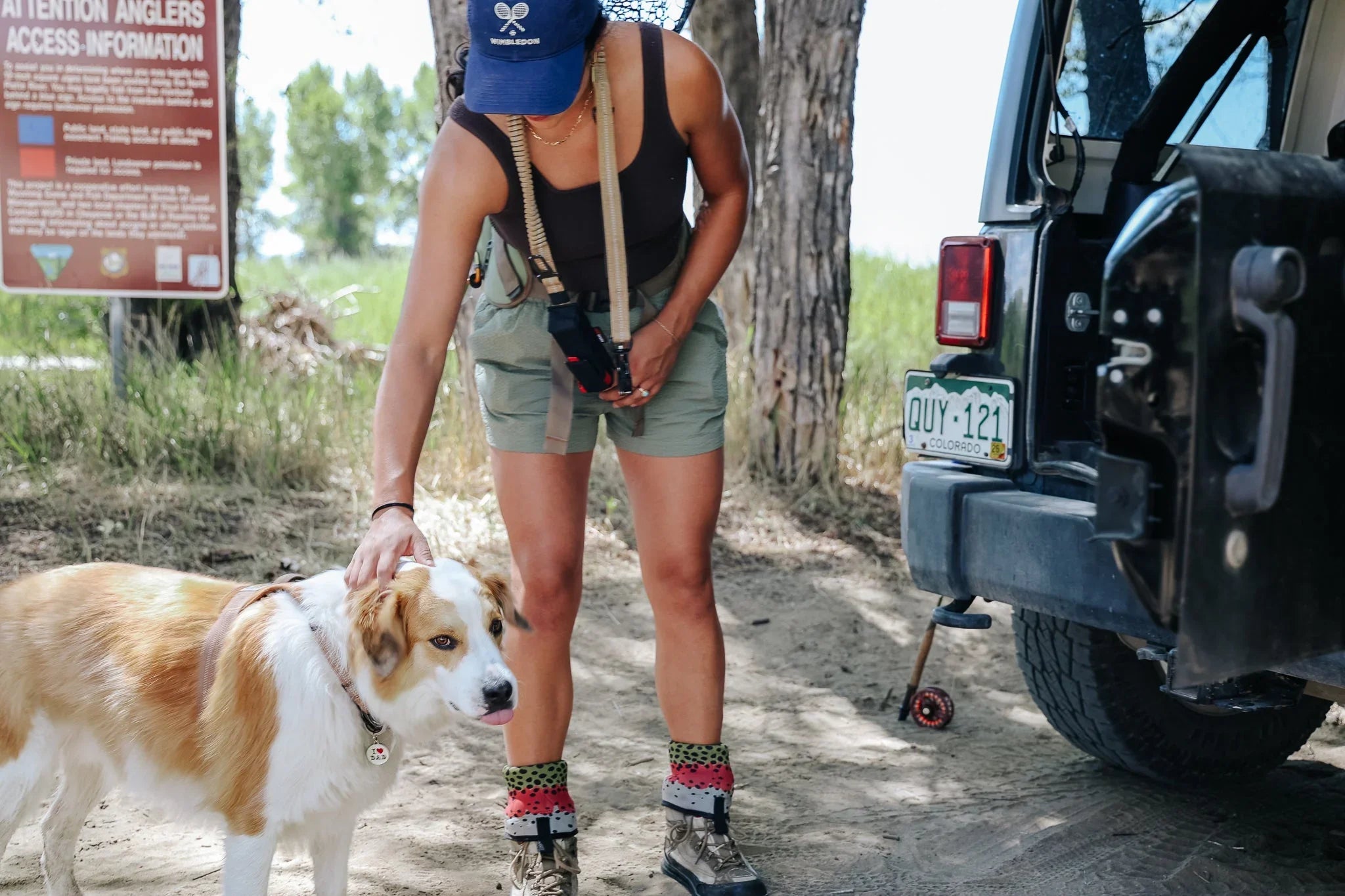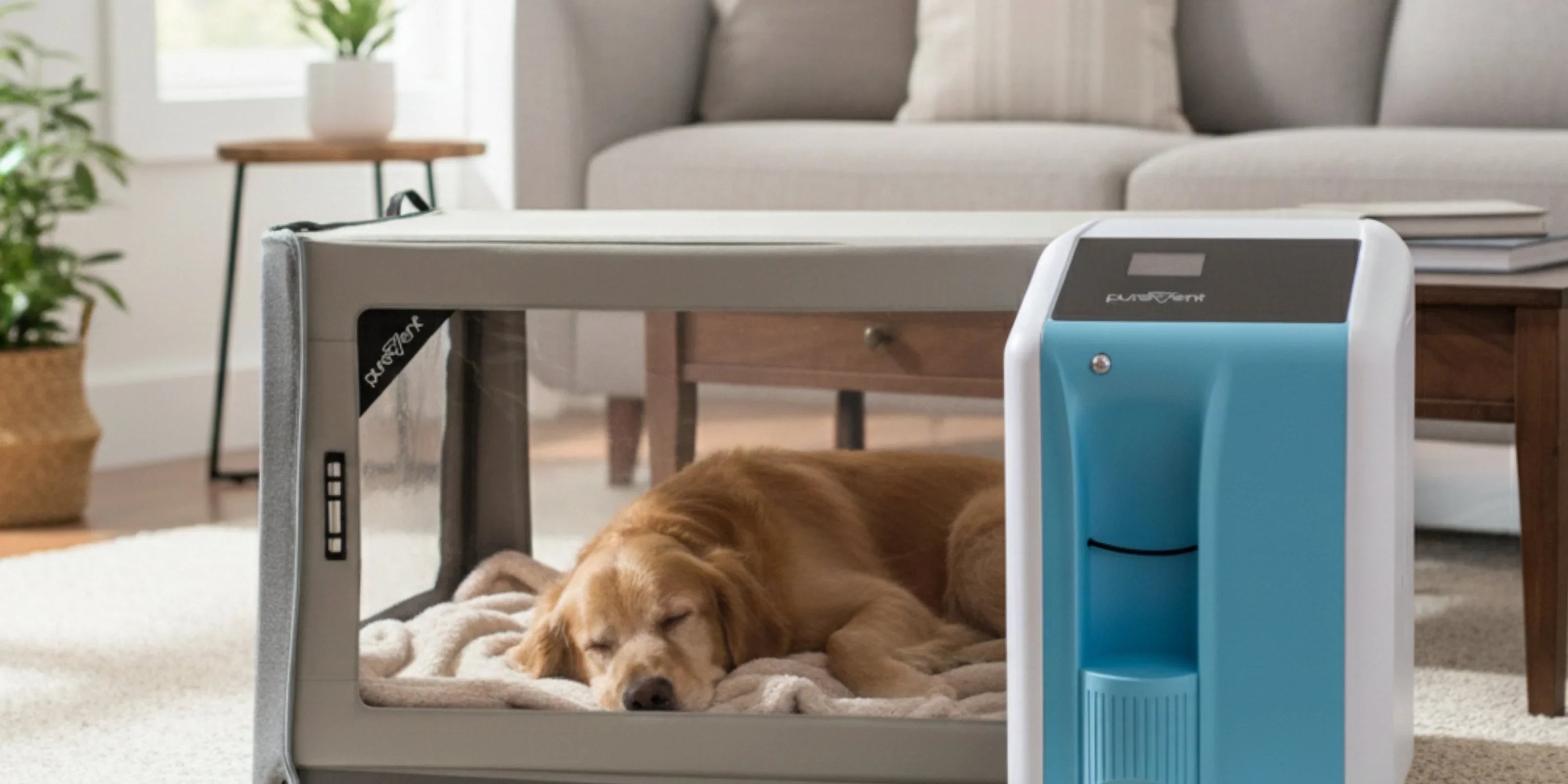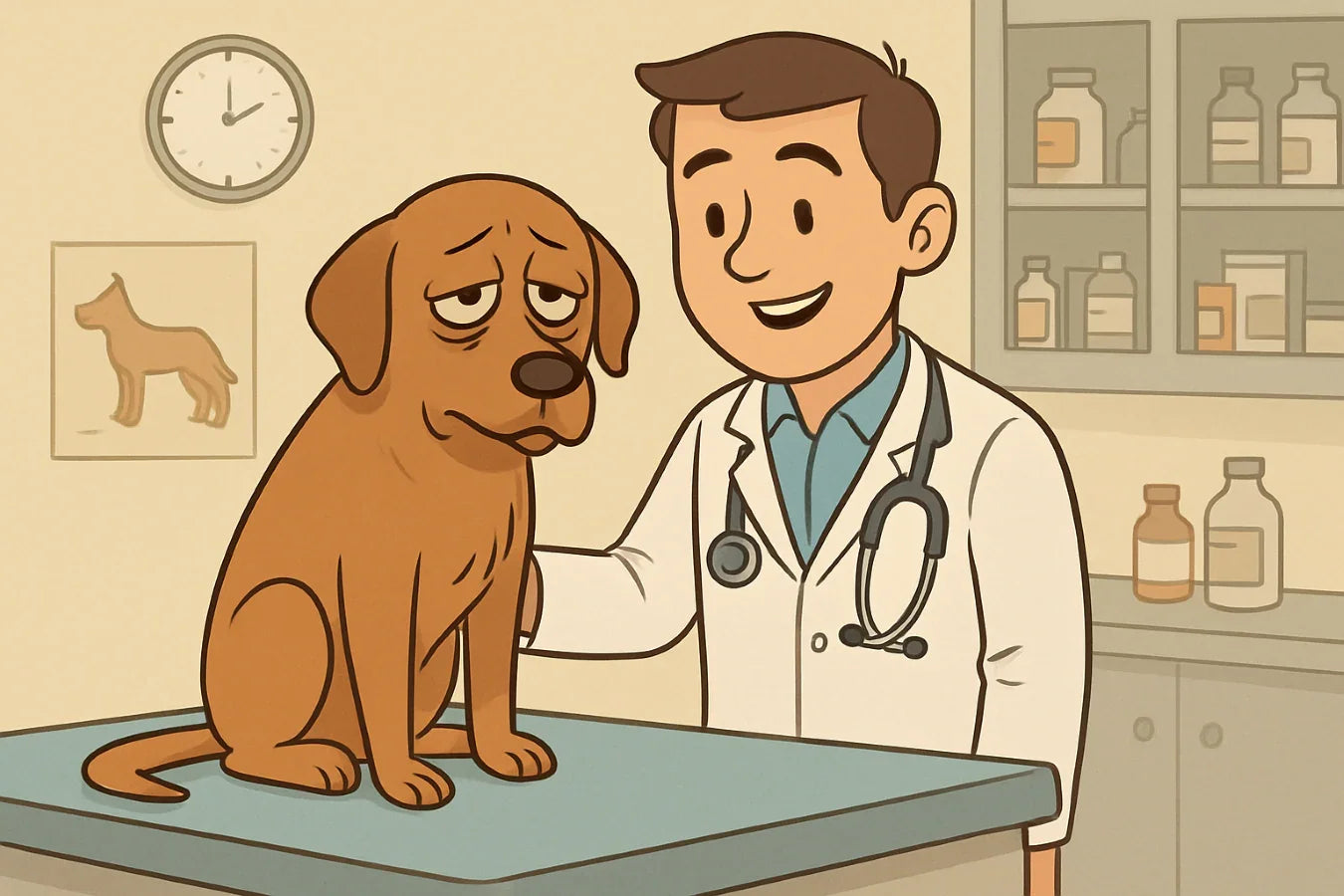Imagine sitting at home when suddenly your dog lets out a loud, honking cough that sounds strikingly like a goose. It’s an unusual and alarming sound, and naturally, your first thought might be—what’s causing this? This distinctive cough is often a key indicator of a collapsed trachea, a condition that affects the windpipe and can make breathing difficult for your dog.
Recognizing the signs early is crucial, as a collapsed trachea can progress over time, leading to increased discomfort and breathing difficulties. While this condition is more common in small breed dogs, any pet can be affected, making awareness and prompt intervention essential.
In this article, we’ll explore everything you need to know about a collapsed trachea, including its symptoms, causes, diagnosis, and management strategies. Whether your dog has just started coughing or has been struggling for a while, understanding this condition can help you take the right steps toward relief and improved quality of life.
Table of Contents
What is a Collapsed Trachea?
The trachea, or windpipe, is a vital structure that allows air to move from the nose and mouth into the lungs. It is composed of rings of cartilage that provide support and keep the airway open, allowing for smooth and effortless breathing. However, in some dogs, these cartilage rings weaken over time, causing the trachea to collapse and restrict airflow.
When the trachea collapses, it partially or fully flattens, leading to irritation, inflammation, and the characteristic “goose honk” cough that many pet owners find alarming. The condition can range from mild to severe, with some dogs experiencing occasional coughing while others struggle with significant respiratory distress.
Why Does the Trachea Collapse?
A collapsed trachea is typically a progressive condition caused by the gradual weakening of the cartilage that supports the windpipe. Several factors contribute to this weakening, including:
- Genetics: Some dogs are born with weaker tracheal cartilage, making them more susceptible.
- Chronic inflammation: Conditions such as allergies, respiratory infections, and exposure to irritants like smoke or dust can aggravate the trachea.
- Obesity: Excess weight puts additional pressure on the trachea, worsening symptoms.
- Age: As dogs get older, their cartilage naturally becomes weaker, increasing the risk of collapse.
Breeds Most at Risk
While tracheal collapse can affect any breed, it is far more common in small and toy breeds, including:
Yorkshire Terriers
Pomeranians
Chihuahuas
Toy Poodles
Maltese
Shih Tzus
These breeds are predisposed due to their naturally smaller airways and genetic susceptibility. If you have a small dog and notice persistent coughing, especially when excited, after exercise, or while wearing a collar, it’s essential to consult your veterinarian to determine if tracheal collapse is the cause.
Symptoms of a Collapsed Trachea
One of the most recognizable signs of a collapsed trachea is a distinctive, harsh, honking cough that sounds like a goose. This cough is often triggered by excitement, exercise, drinking water, eating, or even pressure on the neck from a collar or leash. Many dog owners first notice it when their pet gets overly excited or starts panting heavily. Unlike a typical cough from a respiratory infection, the goose honk is dry and persistent, often worsening over time.
However, a collapsed trachea doesn’t just cause coughing. Other symptoms can indicate the condition is progressing.
Other Symptoms to Watch For
- Difficulty Breathing: As the trachea narrows, airflow becomes restricted, making it harder for dogs to breathe comfortably. This may be more noticeable in warm weather or after physical activity.
- Gagging or Retching: Dogs with tracheal collapse often gag, especially after eating or drinking. This happens because irritation in the throat can trigger reflexive retching, like trying to clear an obstruction.
- Exercise Intolerance: Dogs may struggle with physical activity, becoming winded more quickly than usual. If your dog is reluctant to go on walks, tires easily, or avoids playtime, it could be a sign that their airway is compromised.
- Cyanosis: In severe cases, oxygen deprivation can cause the gums or tongue to turn blue or purple, signaling a medical emergency. If you notice this, seek immediate veterinary care.
The severity of these symptoms can vary. Some dogs may only have occasional coughing episodes, while others experience frequent and worsening breathing difficulties. Recognizing these signs early can help prevent further complications and allow for prompt intervention.

Other Possible Causes of a Goose-Honk Cough
While a goose-honk cough is a hallmark symptom of tracheal collapse, other conditions can cause similar coughing sounds and respiratory issues. If your dog is coughing persistently, it’s essential to consider other possible causes before assuming a tracheal collapse is to blame. A veterinarian can help distinguish between these conditions through a thorough examination and diagnostic tests.
Kennel Cough (Canine Infectious Respiratory Disease Complex - CIRDC)
Kennel cough is a highly contagious respiratory infection caused by bacteria and viruses, most commonly Bordetella bronchiseptica. It also produces a harsh, dry cough that may sound like a goose honk. However, unlike tracheal collapse, kennel cough is usually:
- Accompanied by nasal discharge or sneezing.
- Short-lived, with most cases resolving in one to three weeks.
- More common after boarding, dog park visits, or contact with other dogs.
Heart Disease
Heart conditions, especially in older or small-breed dogs, can cause chronic coughing due to fluid buildup in the lungs or pressure on the trachea from an enlarged heart. Coughing caused by heart disease is often:
- Worse at night or when lying down.
- Accompanied by lethargy, exercise intolerance, and heavy breathing.
- Linked to murmurs or irregular heartbeats detected during a veterinary exam.
If your dog’s cough is persistent and accompanied by fainting, weakness, or rapid breathing, a veterinarian may recommend heart imaging and blood tests to rule out heart disease.
Allergies or Airway Irritation
Dogs, like humans, can suffer from allergies and asthma that lead to chronic coughing. Common irritants include:
- Smoke, dust, perfumes, and air pollution.
- Household cleaners or aerosol sprays.
- Pollen and seasonal allergens.
If your dog’s cough occurs seasonally or after exposure to certain environments, allergies or asthma might be the culprit.
Respiratory Infections
Viral and bacterial infections can cause inflammation in the airways, leading to persistent coughing, nasal discharge, and difficulty breathing. Some common infections include:
- Pneumonia: Often presents with wheezing, fever, and lethargy.
- Canine Influenza: Can mimic kennel cough but may also include fever, runny nose, and fatigue.
- Fungal Infections: Found in certain regions, causing deep-seated coughs and respiratory distress.
If your dog has a sudden onset of coughing with fever, loss of appetite, or breathing difficulties, a veterinarian may recommend diagnostic tests such as X-rays or lab work to check for infections.
Portable, Low-Pressure 15L Oxygen Canisters
Our portable oxygen canisters are lightweight, easy to use, and designed to provide immediate respiratory support for pets experiencing breathing difficulties. They deliver pure oxygen to help alleviate respiratory distress, reduce airway pressure, and provide a safe, effective solution during transport. Each canister holds 15L of medical-grade oxygen, ensuring a reliable supply when your pet needs it most. Our rescue oxygen kits come with either 3 or 6 canisters, depending on your pet’s weight, offering the right amount of support tailored to their needs.
For dogs diagnosed with collapsed trachea, supplemental oxygen can be a critical tool in managing flare-ups, reducing coughing episodes, and improving overall comfort. By increasing oxygen intake, these canisters help ease the strain on their compromised airway, particularly during stressful situations or periods of increased respiratory effort. Whether at home or on the go, having oxygen readily available can provide peace of mind and critical support for your pet’s breathing health.
How to Tell the Difference
While a goose-honk cough is a key symptom of tracheal collapse, the presence of nasal discharge, fever, lethargy, or wet coughing may suggest another underlying cause. Since these conditions can have overlapping symptoms, a veterinarian will often use physical exams, X-rays, or specialized tests to confirm a diagnosis.
In the next section, we’ll explore how veterinarians diagnose tracheal collapse and what tests are used to differentiate it from other conditions.
Diagnosing a Collapsed Trachea
If your dog has developed a persistent, goose-honking cough, a veterinary evaluation is crucial to determine whether a collapsed trachea or another respiratory condition is the cause. Early diagnosis can help guide treatment and improve your dog’s quality of life. Because multiple conditions can cause similar coughing symptoms, your veterinarian will use a combination of clinical evaluation and diagnostic tools to confirm tracheal collapse.
Physical Examination and Auscultation
The first step in diagnosing a collapsed trachea is a thorough physical examination. Your veterinarian will:
- Listen to your dog’s breathing and heart sounds using a stethoscope.
- Gently palpate the trachea to see if it triggers a coughing fit. A characteristic goose-honk cough in response to light pressure is a strong indicator of tracheal collapse.
- Ask about your dog’s medical history, including when the coughing started, any known allergies, exposure to irritants, and any recent respiratory infections.
While a physical exam provides important clues, imaging tests are needed to confirm the diagnosis.
X-Rays or Fluoroscopy
X-rays (radiographs) of the chest and neck are commonly used to assess the trachea’s structure. However, tracheal collapse can be intermittent, meaning the airway may look normal in a static X-ray. To get a clearer picture, veterinarians may recommend:
- Fluoroscopy: This is a real-time X-ray video that captures the movement of the trachea during breathing, coughing, and exercise. Fluoroscopy is particularly useful for identifying collapse that occurs only during inhalation or exhalation.
Endoscopy or Bronchoscopy (For Severe Cases)
In more advanced or unclear cases, endoscopy or bronchoscopy may be recommended. These procedures involve passing a small camera-equipped scope into the airway to get a direct visual of the trachea. They allow veterinarians to:
- Assess the severity and location of the collapse.
- Detect secondary complications such as inflammation, mucus buildup, or infection.
- Collect airway samples if infections are suspected.
Because endoscopy and bronchoscopy require anesthesia, they are usually reserved for severe cases or when other imaging tests are inconclusive.
Why a Proper Diagnosis Matters
Confirming a collapsed trachea is essential because other conditions—such as heart disease, infections, or asthma—can mimic similar symptoms. Proper diagnosis ensures that your dog receives the right treatment plan tailored to their condition.
In the next section, we’ll discuss treatment options for tracheal collapse, from medical management to lifestyle changes and surgical interventions.
Treatment Options for a Collapsed Trachea
Once a collapsed trachea is diagnosed, treatment focuses on managing symptoms, improving breathing, and reducing discomfort. While mild to moderate cases can often be managed with lifestyle changes and medications, severe cases may require surgical intervention. The right approach depends on the severity of your dog’s condition and their overall health.
For most dogs, a conservative approach involving lifestyle modifications and medications can help manage symptoms and slow the progression of the disease.
Non-Surgical Management
Lifestyle Modifications
- Use a Harness Instead of a Collar: Traditional collars can put pressure on the trachea and trigger coughing episodes. A well-fitted harness distributes pressure away from the neck and reduces irritation.
- Avoid Exposure to Irritants: Smoke, dust, perfumes, and strong cleaning chemicals can exacerbate coughing. Keeping your dog’s environment as clean and as free of irritants as possible can certainly help.
- Control Excitement and Overexertion: Excessive excitement or intense activity can worsen symptoms. Keeping your dog calm and stress-free can help minimize coughing episodes.
Weight Management
Excess weight puts additional pressure on the trachea, worsening collapse and breathing difficulties. If your dog is overweight, a veterinarian-approved weight loss plan, including a controlled diet and gentle exercise, can significantly improve their symptoms.
Medications for Symptom Relief
Veterinarians often prescribe medications to help control coughing, open the airways, and reduce inflammation:
- Cough Suppressants: Medications like hydrocodone or butorphanol help reduce the intensity and frequency of the honking cough.
- Bronchodilators: These medications, such as theophylline or terbutaline, help open the airways, making breathing easier.
- Anti-Inflammatories: Corticosteroids (e.g., prednisone) may be used short-term to reduce inflammation in the trachea. However, long-term steroid use comes with risks, so they are prescribed cautiously.
- Antibiotics: If a secondary infection is suspected, a veterinarian may prescribe antibiotics to address bacterial complications.
At-Home Oxygen Therapy
For dogs experiencing severe breathing distress, at-home oxygen therapy can be crucial. Portable pet oxygen solutions, like those offered by Pawprint Oxygen, can provide:
- Emergency relief during a severe coughing episode.
- Support for recovery during flare-ups.
- Easier transport for dogs with respiratory distress on the way to the vet.
Having oxygen therapy on hand can help keep your dog comfortable and prevent serious complications, especially for pets with advanced tracheal collapse or other respiratory conditions.
Surgical Interventions
While most dogs respond well to medical management, surgery may be necessary for severe cases where breathing is significantly impaired, and non-surgical treatments are no longer effective.
When is Surgery Necessary?
Surgical intervention is considered when:
- The tracheal collapse is severe, and medications no longer provide relief.
- The dog is experiencing frequent episodes of respiratory distress.
- Cyanosis (bluish gums or tongue due to lack of oxygen) occurs.
Types of Surgical Procedures
- Tracheal Stenting: A stent, a small mesh tube, is placed inside the trachea to keep the airway open. This is a minimally invasive procedure and is the most common surgical option for tracheal collapse.
- Surgical Rings: In some cases, prosthetic rings are placed around the trachea to provide external support. This procedure is more invasive and is typically reserved for cases where stenting is not an option.
While surgery can dramatically improve breathing, it does come with risks, including infection, inflammation, or stent failure. Post-operative care is essential to ensure long-term success.
Are there any natural treatments that help with a collapsed trachea in dogs?
Yes, there are several natural treatments and home remedies that can help manage a collapsed trachea in dogs. While these remedies won’t cure the condition, they can help reduce symptoms like coughing, inflammation, and airway irritation. Here are some options:
1. Weight Management
- Why it helps: Extra weight puts more pressure on the trachea and worsens breathing difficulties.
- What to do: Keep your dog at a healthy weight with a balanced diet and portion control . Avoid high-calorie treats and opt for fresh vegetables like carrots or green beans.
2. Anti-Inflammatory Supplements
- Why it helps: Reducing inflammation in the trachea can ease breathing and lessen coughing.
-
Natural options:
- Turmeric: Contains curcumin, a natural anti-inflammatory. Mix a small amount into your dog’s food.
- Omega-3 fatty acids: Found in fish oil, these help reduce inflammation in the airways.
3. Honey and Herbal Remedies
- Why it helps: Honey coats the throat and may help soothe irritation, reducing coughing.
-
How to use:
- Give ½ to 1 teaspoon of raw honey up to three times daily.
- Look for honey-based herbal cough syrups with marshmallow root or slippery elm, both of which can ease throat irritation.
4. Humidifier or Steam Therapy
- Why it helps: Dry air can irritate the trachea and trigger coughing.
-
What to do:
- Use a humidifier in your dog’s sleeping area.
- Let your dog sit in a steamy bathroom for a few minutes while you run a hot shower.
5. Avoid Triggers That Worsen Coughing
-
Irritants to remove:
- Smoke (cigarette, fireplace, candles)
- Strong perfumes or air fresheners
- Household cleaners with strong fumes
6. Switching to a Harness
- Why it helps: Collars put pressure on the trachea and can make symptoms worse.
- What to do: Use a soft, padded harness instead of a collar to reduce throat strain.
7. Acupuncture and Chiropractic Care
- Why it helps: Some pet owners find that acupuncture or chiropractic adjustments improve airway function and reduce coughing.
- What to do: Seek out a licensed veterinary acupuncturist or chiropractor for guidance.
8. Oxygen Therapy at Home
- Why it helps: Providing supplemental oxygen can relieve respiratory distress during flare-ups.
- What to do: Consider portable oxygen canisters or an oxygen concentrator to have on hand for emergencies.
How can I prevent my dog from having a coughing fit from a collapsed trachea?
Preventing coughing fits in dogs with collapsed trachea requires a combination of lifestyle changes, environmental management, and supportive care . Here are some effective ways to minimize coughing episodes:
1. Minimize Tracheal Irritation
- Switch to a Harness: A collar puts pressure on the trachea and can trigger coughing. Use a soft, padded harness to reduce strain on the throat.
- Keep Your Dog Calm: Excitement or stress can lead to excessive barking or panting , which worsens coughing. Try to avoid situations that overstimulate your dog.
- Control Barking: If barking triggers coughing, use positive reinforcement training or a white noise machine to reduce triggers like outside noises.
2. Maintain a Healthy Weight
- Why it helps: Excess weight puts pressure on the trachea, making breathing harder.
- How to manage: Feed a balanced, portion-controlled diet and ensure light, low-impact exercise (like short walks).
3. Keep the Air Clean and Moisturized
- Use a Humidifier: Dry air can irritate the trachea, so keep a humidifier in your dog’s living space.
-
Avoid Irritants:
- No smoke exposure (cigarette, fireplace, candles).
- No strong perfumes, air fresheners, or household cleaners.
4. Provide Natural Soothing Remedies
- Honey: A small amount of raw honey (½ to 1 teaspoon) up to 3 times daily can help soothe the throat.
- Herbal Support: Look for natural cough syrups containing marshmallow root or slippery elm to ease airway irritation.
5. Control Temperature and Exercise
- Avoid Hot, Humid Weather: Heat and humidity can make breathing more difficult. Walk your dog during cooler parts of the day.
- No Overexertion: Keep exercise light—short walks instead of high-intensity play.
6. Use Oxygen Therapy During Flare-Ups
- Why it helps: Extra oxygen can reduce the strain on the airways and help your dog breathe more easily.
- What to do: Keep portable oxygen canisters or an oxygen concentrator on hand for emergencies.
7. Medications and Veterinary Support
- Cough Suppressants: If coughing is severe, your vet may prescribe hydrocodone or butorphanol to reduce symptoms.
- Anti-Inflammatories: Steroids (prednisone) or natural options like turmeric can reduce swelling in the trachea.
By implementing these strategies, you can reduce the frequency and severity of coughing fits and improve your dog’s quality of life.
Can a collapsed trachea get better, or will it worsen over time?
A collapsed trachea is a progressive condition, meaning it does not fully heal on its own and can worsen over time if not properly managed. However, with the right treatment, lifestyle adjustments, and medical support , many dogs can maintain a good quality of life and experience fewer symptoms.
Will a Collapsed Trachea Get Better?
- The trachea itself cannot regenerate or return to normal once it has collapsed.
- However, symptoms can improve with proper management, medications, and environmental adjustments .
- Dogs with mild to moderate cases can live comfortably with weight control, cough suppressants, anti-inflammatories, oxygen therapy, and trigger avoidance .
Can It Get Worse Over Time?
- Yes, the condition can progress , especially in senior dogs or those with severe tracheal collapse .
- Repeated inflammation and coughing can weaken the tracheal rings further, making breathing more difficult over time.
- If left unmanaged, a collapsed trachea can lead to chronic respiratory distress, frequent infections, or secondary complications like heart disease .
How to Slow Progression and Improve Comfort
- Maintain a Healthy Weight: Reduces pressure on the trachea.
- Avoid Triggers: Keep your dog away from smoke, dust, and excessive barking.
- Use a Harness: Prevents additional strain on the trachea.
- Provide Oxygen Therapy as Needed: Helps during flare-ups.
- Consider Medications or Surgery (in Severe Cases): Your vet may recommend cough suppressants, bronchodilators, or even stent placement in advanced cases.
What’s the Long-Term Outlook?
- Many dogs with mild to moderate cases can live comfortably for years with proper management .
- Dogs with severe tracheal collapse may need intensive care, oxygen therapy, or surgical intervention to maintain quality of life.
Which Treatment is Best for My Dog?
The best treatment approach depends on your dog’s overall health, severity of the condition, and response to non-surgical treatments. Many dogs with mild to moderate tracheal collapse can live comfortably with medication, lifestyle changes, and oxygen therapy, while surgery may be the best option for severe cases.
In the next section, we’ll discuss long-term management strategies to help keep your dog comfortable and maintain their quality of life.
Home Management Tips
Managing a dog with tracheal collapse requires ongoing care and adjustments to their daily environment. By making small but important changes, you can reduce coughing episodes, improve your dog’s comfort, and help slow the progression of the condition.
Avoid Triggers Like Smoke, Dust, and Allergens
Environmental irritants can exacerbate coughing and airway inflammation, making it essential to keep your dog’s surroundings as clean and irritant-free as possible.
- No Smoking Indoors: Secondhand smoke can significantly worsen respiratory issues.
- Reduce Dust and Airborne Allergens: Use an air purifier, clean frequently, and vacuum with a HEPA filter to remove dust and pet dander.
- Be Cautious with Cleaning Products: Avoid strong aerosols, perfumes, and chemical sprays that can irritate the airway.
If your dog’s symptoms seem worse during certain seasons, seasonal allergies may be a contributing factor. Your veterinarian may recommend antihistamines or other treatments to help manage allergic reactions.
Keep the Environment Calm to Reduce Stress-Induced Coughing
Excitement and anxiety can trigger coughing episodes in dogs with tracheal collapse. Keeping a calm and quiet home environment can help prevent unnecessary stress on your dog’s airway.
- Avoid excessive excitement – Loud noises, doorbells, and sudden interactions can cause coughing fits.
- Use calming techniques – Consider soothing music, pheromone diffusers (like Adaptil), or gentle massage to help keep your dog relaxed.
- Establish a routine – Predictability can reduce anxiety and prevent stress-induced coughing episodes.
If your dog tends to get overexcited when meeting people, try keeping interactions low-key and brief to prevent excessive barking or panting, which can trigger coughing.

Using Supplemental Oxygen in Severe Cases
For dogs with moderate to severe tracheal collapse or those experiencing severe breathing distress, having supplemental oxygen at home can be a critical tool.
Some benefits of oxygen therapy include:
- Providing immediate relief during a coughing episode.
- Helping to stabilize breathing after exercise or stress.
- Supporting recovery if your dog experiences a respiratory crisis.
Pawprint Oxygen offers at-home oxygen solutions designed specifically for pets, including:
- Oxygen concentrators for continuous oxygen therapy.
- Portable oxygen kits with lightweight, easy-to-use canisters.
- Oxygen chambers for pets who need a controlled environment for breathing support.
Having oxygen therapy readily available ensures your dog can breathe easier at home and provides peace of mind in case of emergencies.
By making simple lifestyle changes, avoiding known triggers, and incorporating oxygen therapy when needed, you can greatly improve your dog’s quality of life. While tracheal collapse is a progressive condition, proper management can help reduce coughing, prevent complications, and keep your pet comfortable.
Prognosis and Long-Term Outlook
A collapsed trachea is a chronic, progressive condition, meaning it cannot be fully cured, but its symptoms can be managed effectively with the right approach. Many dogs with tracheal collapse continue to live happy, comfortable lives when provided with proper medical care, lifestyle adjustments, and symptom management.
Managing Expectations: Chronic Condition vs. Treatable Symptoms
It’s important for pet owners to understand that while tracheal collapse is a lifelong condition, the symptoms can be significantly reduced with appropriate treatments.
- Mild to Moderate Cases: Many dogs respond well to weight management, medication, oxygen therapy, and environmental modifications.
- Severe Cases: Dogs with advanced tracheal collapse may require long-term oxygen therapy, long-term medications, and possibly surgical intervention to maintain their quality of life.
- Progression Varies: Some dogs experience slow progression, while others may worsen more quickly, depending on factors like age, overall health, and exposure to triggers.
While a collapsed trachea requires lifelong management, the good news is that many dogs adapt well to treatment and can continue to enjoy their daily activities with a few adjustments.
The Importance of Ongoing Care and Monitoring
Because tracheal collapse can worsen over time, ongoing veterinary check-ups and at-home monitoring are essential.
- Regular Vet Visits: Your veterinarian may adjust medications or recommend additional treatments if symptoms progress.
- Watch for Worsening Symptoms: Increased coughing, difficulty breathing, or cyanosis (blue gums/tongue) could indicate the condition is advancing.
- Emergency Preparedness: Having oxygen therapy on hand, such as Pawprint Oxygen's portable oxygen kits, can help manage respiratory crises and reduce emergency vet visits.
By staying proactive with veterinary care, environmental management, and symptom control, you can help ensure that your dog remains as comfortable as possible for as long as possible.
In the next section, we’ll discuss when to seek emergency veterinary care and warning signs that indicate your dog may need immediate medical attention.
When to See a Veterinarian
While many dogs with a collapsed trachea can be managed with lifestyle changes and medications, there are times when immediate veterinary attention is necessary. Recognizing the warning signs can help prevent serious complications and ensure your dog gets the care they need as quickly as possible.
Red Flags That Require Immediate Attention
If you notice any of the following symptoms, contact your veterinarian or seek emergency veterinary care right away:
If your dog’s coughing becomes more frequent or severe despite treatment.
If they struggle to catch their breath, even at rest.
If they appear excessively anxious or distressed due to difficulty breathing.
If coughing leads to gagging or choking more frequently than before.
A sudden decline in your dog’s breathing ability could indicate that the tracheal collapse has worsened or that a secondary complication (such as an infection or airway obstruction) has developed.
Signs of Oxygen Deprivation (Cyanosis)
If your dog is not getting enough oxygen, they may exhibit:
- Blue or purple gums/tongue (a sign of cyanosis).
- Weakness or collapse due to lack of oxygen.
- Open mouth breathing and excessive panting, even when not overheated.
- Extreme lethargy or unresponsiveness.
These symptoms are a medical emergency. Supplemental oxygen therapy, such as a Pawprint Oxygen portable oxygen kit, can provide immediate relief while you transport your pet to the veterinarian.

When to Schedule a Veterinary Appointment
Even if your dog isn’t in immediate distress, you should schedule an appointment if:
- The coughing is persistent or worsening over time.
- You notice exercise intolerance or increased fatigue.
- Your dog gags frequently after eating or drinking.
- Medications that were previously effective are no longer working.
A veterinarian can assess whether the condition is progressing and adjust treatment as needed to keep your dog comfortable.
Knowing when to seek help is crucial in managing a collapsed trachea. Being proactive about veterinary care and having an emergency plan in place—such as keeping oxygen therapy readily available—can make all the difference in ensuring your dog’s safety and well-being.
Breathing Easier for Years to Come
Hearing your dog cough like a goose can be alarming, but understanding the underlying cause is the first step toward ensuring their well-being. While a collapsed trachea is a common culprit, other conditions—such as kennel cough, heart disease, or respiratory infections—can produce similar symptoms. That’s why early recognition and veterinary diagnosis are essential for determining the best course of action.
If your dog is experiencing persistent coughing, difficulty breathing, or signs of distress, consulting a veterinarian is the best way to confirm the diagnosis and start a treatment plan tailored to your pet’s needs. Medical management, lifestyle adjustments, and oxygen therapy can go a long way in reducing symptoms and improving your dog’s quality of life.
The good news is that many dogs with tracheal collapse continue to live happy and comfortable lives with proper care. By staying proactive in managing their condition, avoiding known triggers, and having an emergency plan in place, you can help your dog breathe easier and enjoy their daily activities for years to come.
